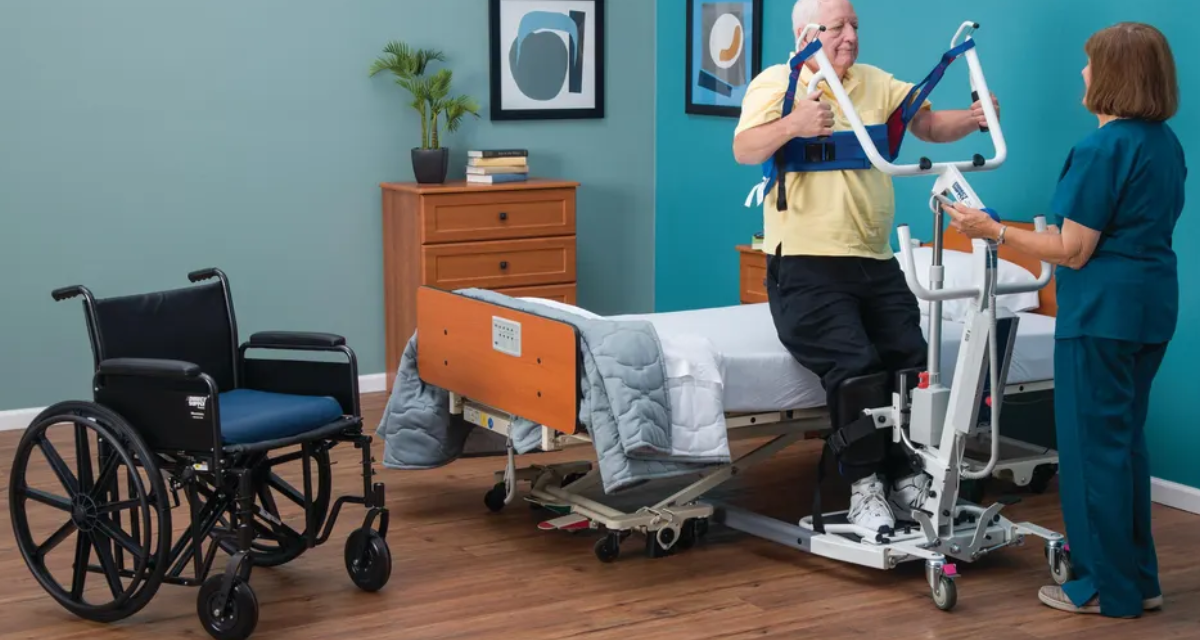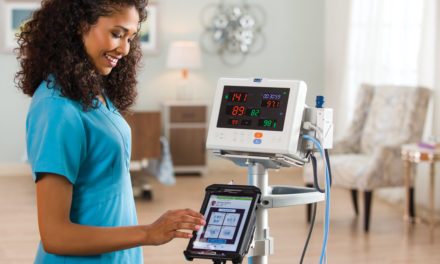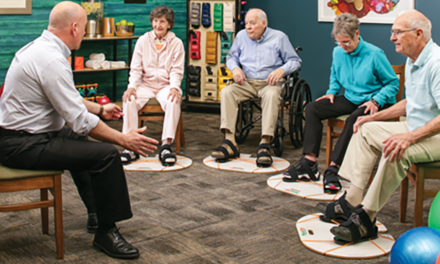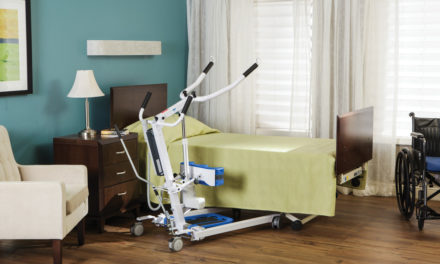Selecting the right sit-to-stand lift is crucial for enhancing resident care and mobility in your facility. These lifts assist individuals with limited mobility in moving from sitting to standing, promoting dignity and participation in daily activities.
Discover key considerations when selecting resident and patient lifts and solutions to enhance your healthcare environment.
Why Choose a Sit-to-Stand Lift?
Patient lifts come in a variety of options with varying features, so choosing the right sit-to-stand lifts depends on the unique needs of your patients, residents and the usage scenarios.
- Suitable for residents with weight-bearing ability or upper-body strength
- Ideal for resident rooms, toilet areas, bathing areas, and common spaces
- Enhances dignity and resident participation
- Easier and faster to use than floor lifts
- Small footprint for easy storage
Key Factors in Choosing a Lift for Your Facility
Weight Capacity
- Higher weight capacities can accommodate a wider variety of residents
- As weight capacity increases, so does the size of the lift
- Large lift size can limit usefulness in tight spaces, such as bathrooms
Base Widening (Powered vs Manual)
- Powered: requires the push of a button for the least amount of stress on the caregiver
- Manual: Hand-Shift Lever—the most potential to cause strain on caregiver, especially when there is weight in the sling
- Manual: Foot Pedal—uses the caregiver’s weight to widen the base, limiting back and shoulder strain
Emergency Control
- All electronic lifts should have a control to stop the lift motor in case of an emergency
- Manual override allows residents to be safely moved in case of power loss
Base Length and Width
- Shorter base lengths and widths allow lifts to maneuver in tight spaces
- The base should be wide open enough to fit around equipment and provide stability
Scale Attachment
- Allows caregiver to weigh residents during transfer, helping reduce incidence of caregiver injury
- Saves time and eliminates the need for an additional transfer to a scale
Base Clearance
- To maximize effectiveness, lifts should fit under existing beds
- For low beds, measure the underbed clearance and choose lifts with low base clearance
- Raising the bed forklift placement ensures staff work in a better position when applying or removing a sling
Sit-to-Stand Slings
In addition to selecting sit-to-stand lifts, there are two distinct types of slings available for use with them, each designed to meet specific resident needs. Both types require steady cognitive awareness for use.
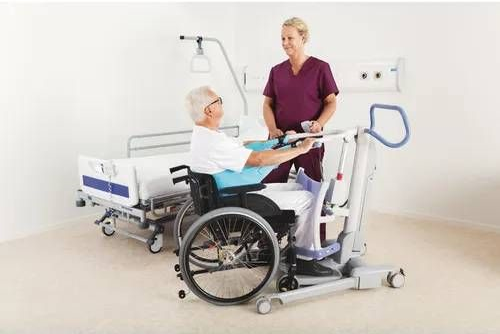
Standing slings: Use standing slings for residents with sufficient weight-bearing ability for standing assistance, gait training, and quick toileting
Transport slings: Use transport slings for residents with less weight-bearing ability, needing extra standing assistance, these slings provide extra support via thigh straps
Prioritizing safety: The advantages of safe lifting practices in your community
As acuities continue to rise and surveyors continue to cite F-Tag 323 (Accidents), it’s becoming increasingly important to establish and promote ergonomic and injury prevention programs.
Learning how to use sit-to-stand lifts and utilizing them correctly and consistently can play a key role in establishing a culture of safety within your healthcare facility. The proper use of senior lifts can significantly impact the safety of residents and staff, as well as enhance residents’ mobility, strength, and independence.
How to Enhance Resident and Staff Safety in Lift Transfers
- Minimize lifting-related incidents and injuries
- Alleviate caregivers’ daily strain
- Lower insurance costs
- Improve care quality and resident outcomes
- Ensure safety for resident outcomes
- Boost staff recruitment and retention
- Increase community marketability (resident admissions)
- Control employee injury and malpractice expenses
Sit-to-Stand Lifts FAQs
What is a sit to stand lift and how does it benefit residents and patients?
A sit to stand lift is a device designed to assist individuals with limited mobility in moving from a sitting to a standing position. This equipment is particularly beneficial in senior living facilities as it helps prevent falls, reduces the risk of injuries to both patients and caregivers, and promotes independence and dignity for residents.
How do I choose the right sit to stand lift for my facility?
When choosing a sit to stand lift for your facility, consider the following factors:
- Weight Capacity: Ensure the lift can accommodate the weight of your heaviest patients
- Safety Features: Look for features like non-slip footrests and emergency stop functions
- Ease of Use: The lift should be easy to operate for caregivers, with intuitive controls
- Battery Life: Consider the battery life and whether the lift can be used while charging
- Adjustability: The lift or sling should be adjustable to cater to patients of different sizes and needs
What maintenance is required for a sit to stand lift?
Regular maintenance of a sit to stand lift is crucial to ensure its safety and longevity. Maintenance tips include:
- Regular Cleaning: Clean the lift regularly to prevent the buildup of dirt and bacteria
- Inspection: Frequently inspect all parts of the lift, including the harnesses, batteries, and moving parts, for any signs of wear or damage
- Battery Maintenance: Keep the batteries charged and replace them as needed to ensure the lift operates smoothly
Direct Supply® makes finding the right sit-to-stand lifts easy
When it comes to patient lifts, we know there are many choices on the market today and finding what’s best for your facility can be a challenge. That’s why Direct Supply offers an assortment of the top brands in one convenient place…plus this guide to help you sort through the important considerations and features.
Once you’ve made your pick, you’ll find easy ordering, convenient delivery and installation services, budget-friendly financing options, and a 100% satisfaction guarantee. Of course, if you need assistance you can count on our expertise to help you find exactly the right match for your specific requirements and budget. Shop our wide selection of sit-to-stand lifts today!
